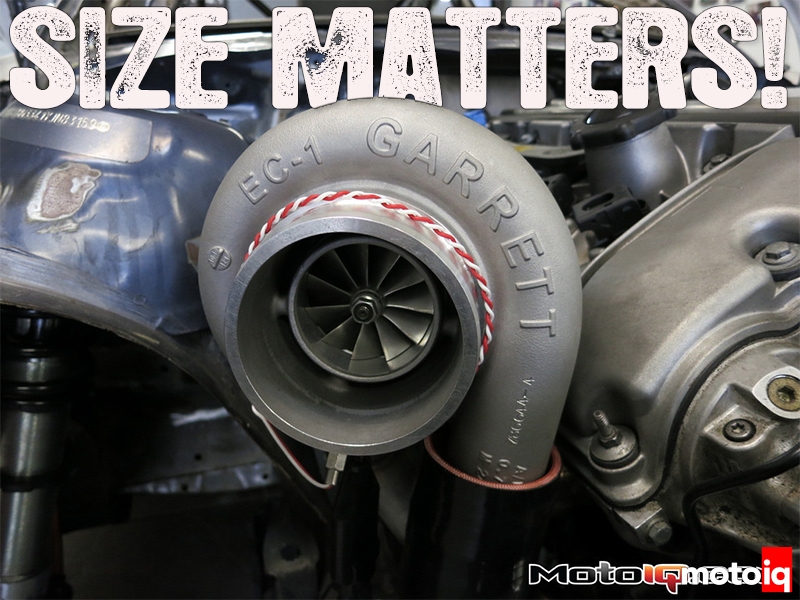
Turbo Tech: Size Matters! – Part 2
Khiem Dinh is an engineer for Honeywell Turbo Technologies at the time of this writing. All statements and opinions expressed by Khiem Dinh are solely those of Khiem Dinh and not reflective of Honeywell Turbo Technologies.
“How much boost do you run?” That’s the question heard around the turbo car world all too often. More boost equals more power right? (Lee Corso voice) “Not so fast my friend!” As is often the case, it depends. So why does engine power from 20psi of boost pressure from a small turbo not equal engine power from the same boost with a larger turbo? Two of the main contributors to the performance difference despite the same boost pressure are efficiencies and back pressure. Back pressure is the easier one to visualize, so let’s talk about that one first. Simply, a smaller turbo has a smaller turbine wheel which acts like a smaller exhaust pipe. Bigger turbo, bigger turbine wheel, acts like a bigger exhaust pipe. A bigger exhaust pipe has less flow restriction compared to a smaller exhaust pipe of course and less flow restriction leads to increased power.
Another way to visualize flow restriction is as back pressure on the engine. The more back pressure on the engine, the less power it will make. Why? For one, it’s harder to push out the old exhaust gas from the cylinder against high pressure in the exhaust manifold. For an analogy, cycling is a lot easier in conditions with no wind versus a 20mph headwind. Also with high exhaust backpressure, less cool and fresh air gets into the cylinder. Why? Because there’s always some valve overlap where the intake and exhaust valves are both open at the same time. If you have 20psi of boost pressure in the intake manifold but 40psi of pressure in the exhaust manifold, it’s going to be pretty hard for that 20psi of fresh air to push against that 40psi of exhaust during valve overlap. There will therefore be less fresh air in the cylinder which means less fuel can be burned resulting in less power.
To demonstrate how a larger turbo makes more power with the same intake manifold pressure as a smaller turbo, I used the Borg Warner MatchBot program to show how an EFR 6748 and EFR 8374 perform on a 2.0L race engine (i.e. high volumetric efficiency). I used most of the default values in the program, but made assumptions for turbine efficiency and BSFC depending on the turbo size. Bigger turbos naturally have better compressor and turbine efficiencies (wheel to housing clearances are smaller in ratio to wheel diameter resulting in lower efficiency losses), so the EFR 8374 has better turbine efficiency than the EFR 6758. For BSFC, you get better (i.e. more power) values with better engine delta pressure (intake manifold pressure – exhaust manifold pressure).
 These are the inputs I used for the EFR 6758. (Click the image to play with the inputs yourself if you like.)
These are the inputs I used for the EFR 6758. (Click the image to play with the inputs yourself if you like.) Here are the EFR 6758 operating points plotted on the compressor map for my hypothetical 2.0L race engine running 20psi of boost. As you can see, it’s sized pretty well for a street/road course turbo using up all the compressor map width resulting in a wide torque curve. Of course, the compromise is peak power at high engine speeds as the compressor is operating close to the choke side of the map where the efficiency is low.
Here are the EFR 6758 operating points plotted on the compressor map for my hypothetical 2.0L race engine running 20psi of boost. As you can see, it’s sized pretty well for a street/road course turbo using up all the compressor map width resulting in a wide torque curve. Of course, the compromise is peak power at high engine speeds as the compressor is operating close to the choke side of the map where the efficiency is low.



